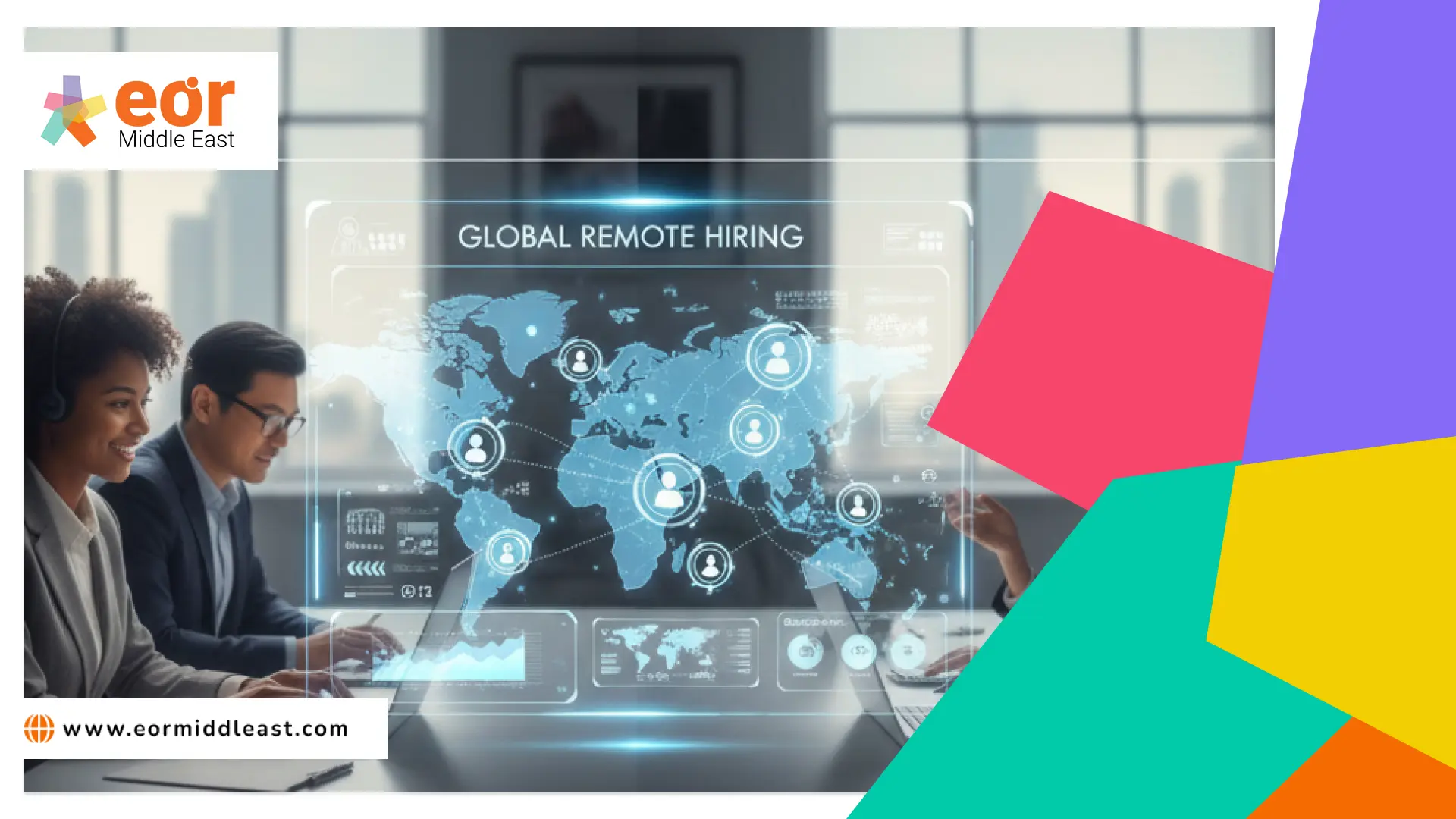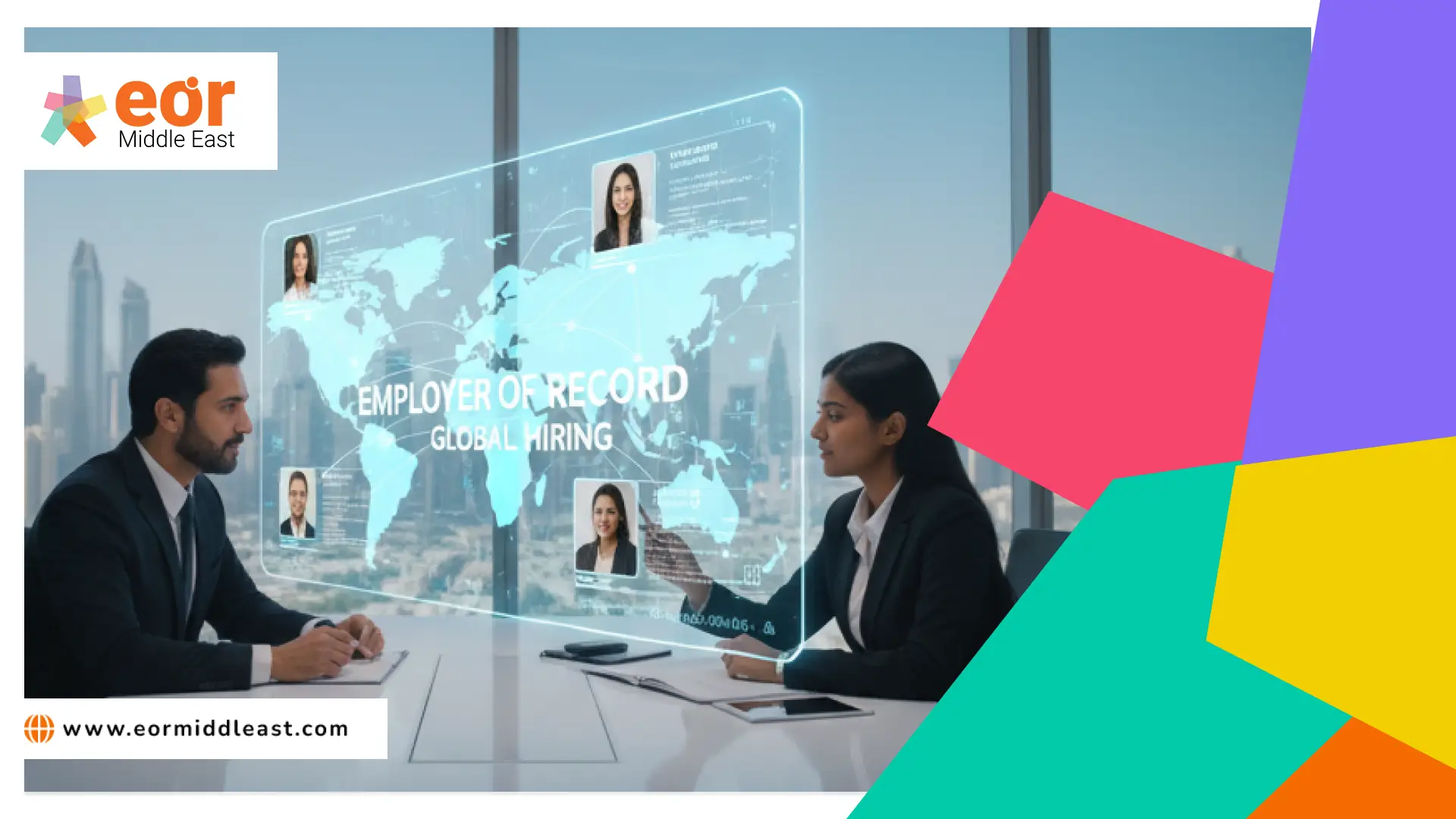We can agree that human resources play a crucial role in a business’ success, especially when it comes to competition. Human resource management (HRM) has the objective to select individuals with the suitable capacities to achieve the company’s goals. Therefore, you can select qualified individuals to streamline your operations.
In this article, you will learn everything you need to know about HRM and how it can boost your business. The business world is naturally competitive, if you want to keep it up in the game and not be left behind; you must find top-performing employees to gain an edge over the competition. Let us see:
- What does human resource management entail?
- Why is human resource management so crucial for companies?
- What are the different approaches to human resource management?
- How does HR management work within a company’s structure?
- What are the goals and purpose of HR management?
- Roles and responsibilities of a human resource manager
- How can EOR Middle East help you get more information about HR management?
1. What does human resource management entail?
Let us see a bit of the background story of this concept: the term human resource management was coined in the early 1900s and widely extended in 1960 to refer to people who work for a company as a whole.
Human resource management involves hiring, national and international recruitment, and managing a company’s employees. However, it is most commonly known simply as human resource. Therefore, this department is in charge of creating, putting into effect, and overseeing policies regarding workers. In addition, it focuses on the relationship of the organization with its employees.

Bear in mind, employee management makes emphasis on employees as an asset of the company. In this manner, they often refer to employees as human capital. Their goal is to maximize return on investment as much as possible and reduce risk by making effective use of employees as with any other business asset.
2. Why is human resource management so crucial for companies?
Its importance lies in managing the people within a workplace to achieve the organization’s objectives, and reinforce the culture. When the job of a human resource manager is effectively done, it can help recruit new professionals who have the necessary skills to further the goals of the company. Moreover, human resource managers contribute to the training and development of current employees to meet objectives.
Keep in mind, an organization is only as good as its employees are. Hence, human resource managers play a prime part in maintaining or improving the health of the business. In addition, they have to pay monitor and pay special attention to the state of the job market, which is constantly changing, to help the organization stay competitive.
The changes in the job market might include making sure compensation and benefits are fair, job roles adapt based on the market, and finding ways to keep employees from burning out. As a result, they always have to keep up with new laws and regulations.
To sum up, it is one of the most important areas of an organization’s management, since people are the most important resource of any company. Additionally, HR managers are responsible for producing new products, accumulating, using financial resources, and controlling quality. It allows companies to go from a series of good and successful companies to the leaders in a certain market segment.
3. What are the different approaches to human resource management?
For the second half of the 20th century, many approaches developed in human resource management theory, resulting in three main approaches: economic, organic (organizational), and humanistic.
Economic approach
Within the framework of the economic approach, the main place is given to the technical training of workers at the company (aimed at mastering labor techniques), rather than management. They perceived the organization as a huge mechanism, the parts of which are strictly adapted to each other.

The theory is based on several principles. Let us see:
- Ensure leadership unity; subordinates must receive orders from a single boss.
- Set the necessary and sufficient amount of control; the number of employees reporting to a boss should be such that this does not create a problem in terms of communication and coordination.
- A clear separation of the headquarters and the linear structures of the organization; being responsible for the content of the activities, the staff cannot, in any case, exercise the power of authority with the line managers.
- The subjugation of individual interests to a common cause with the help of firmness, personal example, honest agreements, and constant control.
- Ensuring equality at all levels of the organization, based on goodwill and fairness, well-deserved remuneration, improving morale, but without generating excessive pay or motivation.
Organizational approach
As part of the organizational approach, they formed a new vision of personnel, which they began to consider not as a labor resource, but as a human one. It contains a combination of socio-cultural and socio-psychological characteristics, and their difference from labor resources is as follows:
- People endowed with intelligence; react to external influence (control) emotionally and significantly, and not mechanically.
- By possessing intelligence, employees are can continuously improve and develop, which is the most important source, as well as in the long term, increasing the effectiveness of any organization.
- People choose a specific type of activity (productive or non-productive, mental or physical), consciously setting specific goals.
- The control subject must provide all opportunities for the implementation of these goals, and create conditions for the implementation of motivating attitudes to work.
- Human resources are the competitive sector of any organization.
As a result, the organization is a living system, closely linked and inextricably linked with the environment, as a set of elements connected by lines of control, communication, and monitoring.
In general, the organizational approach focused on the following key points:
- The need to take into account the details of the environment in which the organization operates.
- Understanding of the organization as the relationship of inter-organizational subsystems, the identification of key subsystems, and the analysis of ways to manage their relationships with the environment.
- The need to balance subsystems and eliminate dysfunctions.
Humanistic approach
It starts from the concept of organization as a cultural phenomenon and focuses on the human side of the organization:
- To what extent do employees integrate into the organization’s existing value system? (to what extent do they unconditionally accept it as their own?).
- How sensitive, flexible, and ready they are for changes in living conditions and activities.
This approach plays a positive role in understanding organizational reality. Therefore, the notion of an organization as a cultural phenomenon allows us to understand how through what symbols and meanings, they carry out the joint activities of people in the organizational environment.
The economic and organizational approaches emphasize the structural side of the organization. On the other hand, the humanist (organizational and cultural) shows how to shape the organizational reality and influence it through language, norms, traditions, etc.
There is an understanding that effective organizational development is a change not only in structures, technologies, and skills but also in the values that influence the activity of people. A long-term approach that aims to increase company performance, and improve employee satisfaction. In addition, works with employees on how they can adapt to imposed changes.
4. How does HR management work within a company’s structure?
Dedicated human resource professionals are responsible for the day-to-day execution of HR-related functions. In most cases, companies dedicate an entire department to execute HR-related functions.
The human resource departments may vary among organizations depending on the size, structure, and nature of their individual positions. Surprisingly, in the case of smaller organizations, it is common to see a handful of HR generalists, who each perform a broad array of HR functions.
On the other hand, larger companies have more specific and specialized roles. They have individual employees dedicated to functions such as recruiting, visa and immigration handling, benefits, compensation, talent management, and more. Hence, in larger organizations, HR positions differ from each other. However, job functions may still relate to each other.
Among the many different HR positions, we have:
- Human resource assistant
- Human resource business parent
- Recruiter
- Manager
- Recruiter coordinator
- Immigration specialist
- Recruiting manager
- Compensation specialist
- Development manager
- Talent manager
- Analytics manager
5. What are the goals and purpose of HR management?
Human resource management has many different goals broken down into four categories. Let us see:
Organizational goals
They are the set of actions that ensure the efficiency of the organization. This can be achieved by hiring the right number of employees for a specific task, providing training, and maintaining high employee retention rates.
In contrast, the long-term objectives include trying to achieve the profitability and competitiveness of the company over time. In the case of non-profit survival, or being able to do the same with fewer resources.
Societal goals
These objectives respond to the social and ethical needs or challenges of the company and its employees. This includes serious topics such as equal pay for equal work and equal opportunity.
Functional objectives
They are measures to keep human resources functioning properly within the organization as a whole. For instance, making sure all employees allocate to their full potential.
Personal objectives
These guidelines support the personal goals of each employee, such as the opportunity for education or career development, and most importantly, maintaining employee satisfaction.
6. Roles and responsibilities of a human resources manager
We can break down human resource management into subsections; pre-employment and employment phases. HRM supervision can include the following:
- Compliance with labor laws
- Performing specialist
- Career development
- Build a team
- Compensations
- Onboarding and retention of employees
As the company grows and becomes more complex, HR management also grows and becomes more important, although the purpose is the same. As a result, it begins to have a separate function to coordinate HR management. Consequently, appointing for this a Manager in charge of the department.
To sum up, the Human Resources Manager has a very important role to play as support in the construction and maintenance of the teams
7. How can EOR Middle East help you get more information about HR management?
Human resources management is a very broad topic and might get overwhelming at times. However, if you are looking for help to manage all your HR and payroll activities do not worry; in EOR Middle East, we assist you. We help companies around the globe enter new markets in our supported countries in the Middle East, especially when it comes to HR management.
Next, let us see some of our supported countries:
Moreover, we have many years of experience in the market, helping companies achieve their goals and thrive in new markets in the Middle East. In addition, if you are still unsure, we have a high percentage of success and several recognitions. We ensure a rapid and easy process. Hence, do not hesitate to contact us!

Would you like to contact EOR Middle East to obtain more information about human resources management? If you want us to support your business with our HR management expertise, you can send us an email at [email protected].



